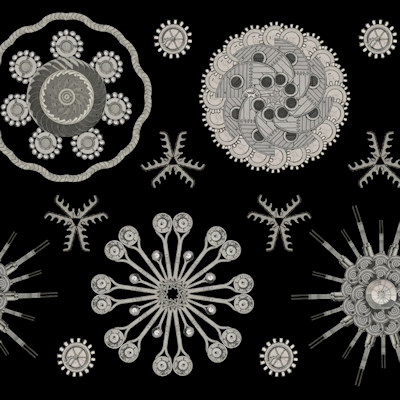November 17, 2022 -- Artificial enzymes targeting the SARS-CoV-2 genome can inhibit viral infection, pointing to a new way to rapidly develop treatments for emerging biological threats such as COVID-19.
In 2014, researchers used the artificial genetic material XNA, a synthetic alternative to RNA and DNA, to create the first fully artificial enzymes. The molecules, dubbed XNAzymes, were initially inefficient and only worked under specific laboratory conditions, but subsequent engineering improvements resulted in enzymes that are stable in the conditions they encounter inside cells.
When the COVID-19 pandemic began, the Cambridge Institute of Therapeutic Immunology & Infectious Disease's Alex Taylor, the lead author on the 2014 XNAzymes paper, created and screened artificial enzymes against SARS-CoV-2. The work took Taylor, "a matter of days," the scientist said in a statement.
Taylor and his colleagues published details of the work November 16 in the journal Nature Communications. The paper describes the design, synthesis, and screening of enzymes designed to cut SARS-CoV-2. After engineering three of the enzymes to self-assemble into a catalytic nanostructure with enhanced biostability, the scientists showed that their XNAzymes can cleave SARS-CoV-2 RNA under physiological conditions.
When transfected into cells, the artificial enzymes inhibited infection with the pandemic coronavirus by RNA knockdown. Pehuén Pereyra Gerber, who performed the experiments on SARS-CoV-2 in Nicholas Matheson's lab, explained the significance of the finding.
"It's really encouraging that for the first time -- and this has been a big goal of the field -- we actually have them working as enzymes inside cells, and inhibiting replication of live virus," Gerber said.
The work provides proof of principle for the use of the XNAzymes platform in the rapid generation of antiviral reagents. Because the catalytic core of the XNAzymes remains the same for each pathogen, with just the RNA sequences they are programmed to recognize changing, the technology could enable fast antiviral responses to the emergence of new threats, much as mRNA accelerated the COVID-19 vaccine response.
Potential concerns include off-target cuts, which could cause the XNAzymes to affect human cells. The specificity of the artificial enzymes should mitigate that risk. Taylor checked the target viral sequences against databases of human RNA to prevent on-target cuts causing problems. Viral resistance is another concern, leading the team to target stable parts of the genome and design XNAzymes that cut different parts of the virus.
"We're targeting multiple sequences, so for the virus to evade the therapy it would have to mutate at several sites at once," Taylor said. "In principle, you could combine lots of these XNAzymes together into a cocktail. But even if a new variant does appear that is capable of getting round this, because we already have the catalytic core, we can rapidly make new enzymes to keep ahead of it."
Copyright © 2022 scienceboard.net









